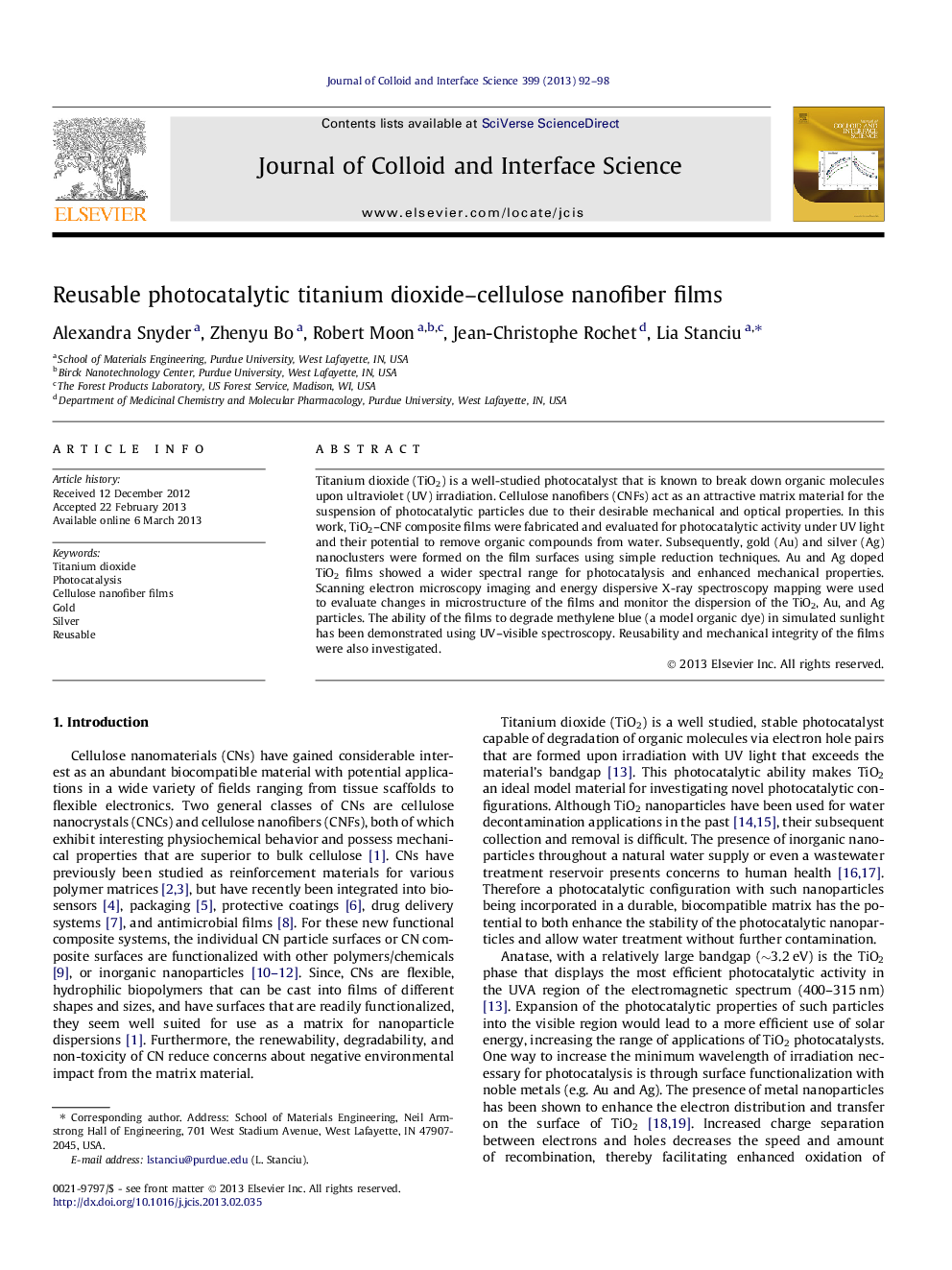| Article ID | Journal | Published Year | Pages | File Type |
|---|---|---|---|---|
| 607733 | Journal of Colloid and Interface Science | 2013 | 7 Pages |
Titanium dioxide (TiO2) is a well-studied photocatalyst that is known to break down organic molecules upon ultraviolet (UV) irradiation. Cellulose nanofibers (CNFs) act as an attractive matrix material for the suspension of photocatalytic particles due to their desirable mechanical and optical properties. In this work, TiO2–CNF composite films were fabricated and evaluated for photocatalytic activity under UV light and their potential to remove organic compounds from water. Subsequently, gold (Au) and silver (Ag) nanoclusters were formed on the film surfaces using simple reduction techniques. Au and Ag doped TiO2 films showed a wider spectral range for photocatalysis and enhanced mechanical properties. Scanning electron microscopy imaging and energy dispersive X-ray spectroscopy mapping were used to evaluate changes in microstructure of the films and monitor the dispersion of the TiO2, Au, and Ag particles. The ability of the films to degrade methylene blue (a model organic dye) in simulated sunlight has been demonstrated using UV–visible spectroscopy. Reusability and mechanical integrity of the films were also investigated.
Graphical abstractFigure optionsDownload full-size imageDownload high-quality image (41 K)Download as PowerPoint slideHighlights► Au and Ag nanoclusters were reduced on TiO2–cellulose nanofiber film surfaces. ► Metal nanoclusters increase the minimum wavelength of irradiation for photocatalysis. ► Films were evaluated for photodegradation of methylene blue in simulated sunlight. ► Ag and Au enhanced reusability, mechanical stability, and photodegradation ability.
